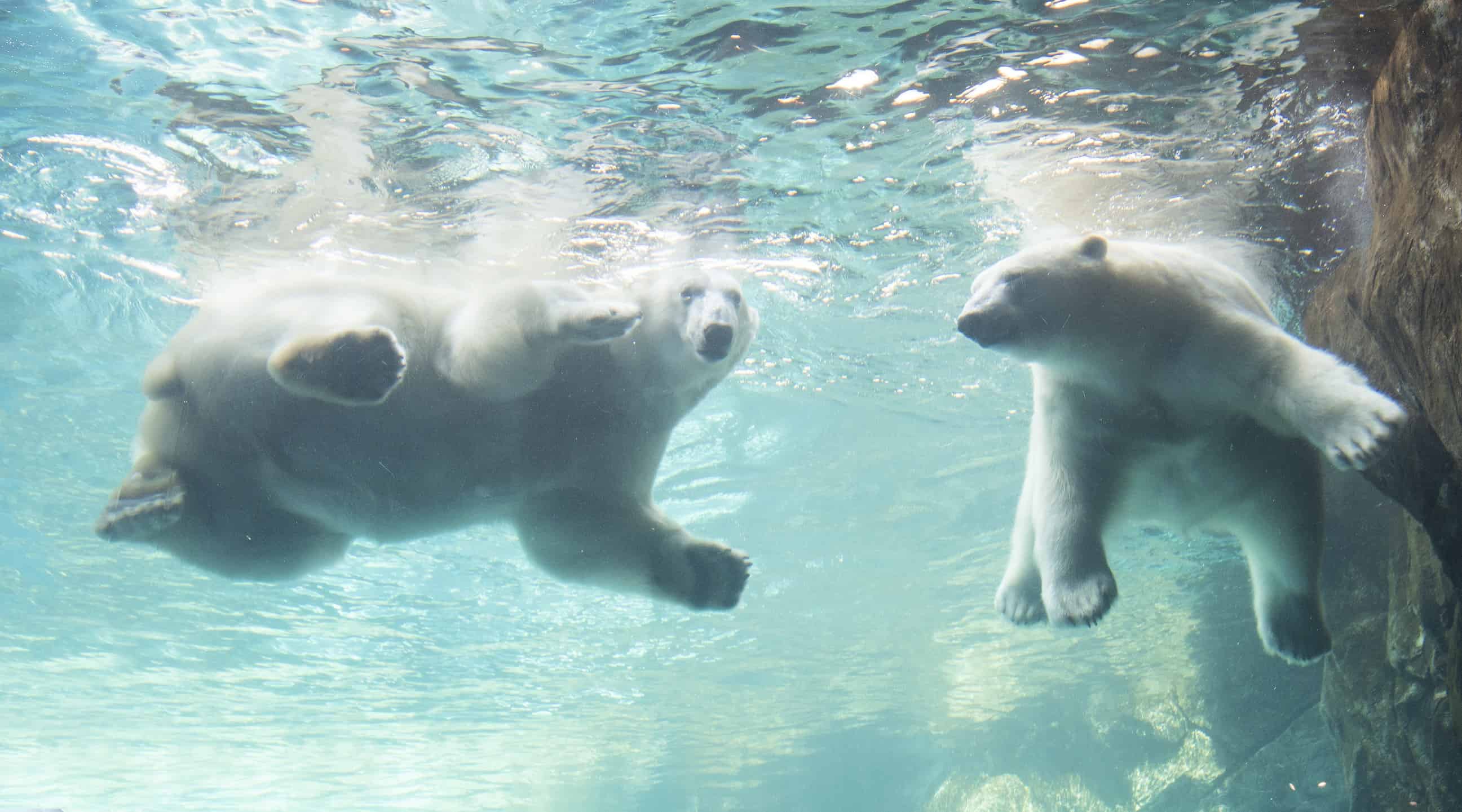An inuksuk welcomes me to Churchill. Beyond it are a pair of handsome red and blue townsite buildings. A sled and a snowmobile - winter vehicles not needed on this pleasant fall day - are parked out front. A fishing boat and a kayak lay upon the beach and a large sign tells me Churchill is both the polar bear and beluga whale capital of the world.
Churchill, Manitoba sits on the western shore of Hudson's Bay, where boreal forest, tundra, wetlands, and coastal and marine ecosystems meet. I am actually one thousand kilometres south, at the Journey to Churchill exhibit in Winnipeg's Assiniboine Park Zoo. The exhibit only opened in 2014 and millions of dollars went into it; the attention to detail so acute that I feel as if I've landed in the Arctic frontier town itself.
Walk on the wild side
I leave the recreated townsite and pass through a landscape of grey tundra rock and low shrubs, dotted with spruce trees. An adult polar bear suns himself while resting in a grassy field; further on, another bear plays in a pond. Bones from a washed-ashore bowhead whale poke through sand.
Behind glass walls inside the Sea Ice Passage, an underwater viewing tunnel, I watch a harbour seal spin, dive, and blow a fountain of bubbles. The other half of the tunnel belongs to the polar bears.


In the Aurora Borealis Theatre, birds chip and caribou herds thunder past. Green and white Northern Lights dance enchantingly overhead.
People and place
Churchill's natural resources have attracted people since Pre-Dorset times, some thirty-seven hundred years ago. Today, people of diverse backgrounds come to work, study and explore nature. The Dene, Cree, Inuit and Métis living near Churchill share a strong connection to the land. I watch the Rhythms of the North film and learn about the effect of climate change on that connection. Outside the theatre, an exhibit highlights the trapping lifestyle and I admire a display of Inuit art.
Where the wild things are
Back outside, I spot two woodland caribou. A silvery-grey Arctic fox watches me with unblinking eyes from where he rests in the grasses. Several muskox roam atop a hill. Muskox have not been seen in the real Churchill since 1954. Their population declined in the 1800s due to commercial over-hunting. Thanks to actions taken by several countries, including protective laws in Canada, the population has rebounded in many areas. But still, muskox are no longer found in Manitoba - except here.
The bear necessities
I return to the townsite. A large metal drum with red panels catches my eye. Upon closer inspection, I learn that it is a bear trap.

The Churchill area is home to over nine hundred polar bears. Cute as they are, a safe bear is a distant bear. Traps like these are used to relocate problem bears. The Polar Bear Alert team then uses a helicopter - like the one parked at the edge of the townsite in the zoo exhibit - to transport bears out of the real town of Churchill.
No polar bears wander the townsite today, but as I have a bite to eat inside the Tundra Cafe, I spy a pair of bruins through a wall of floor-to-ceiling windows. The nearest bear nibbles grass, rolls over, and wiggles to rub his back. Then he rolls onto his stomach and noses at the grass once again. It’s a heartwarming end to my brief Journey to Churchill.
More Manitoba on Canadian Traveller:


